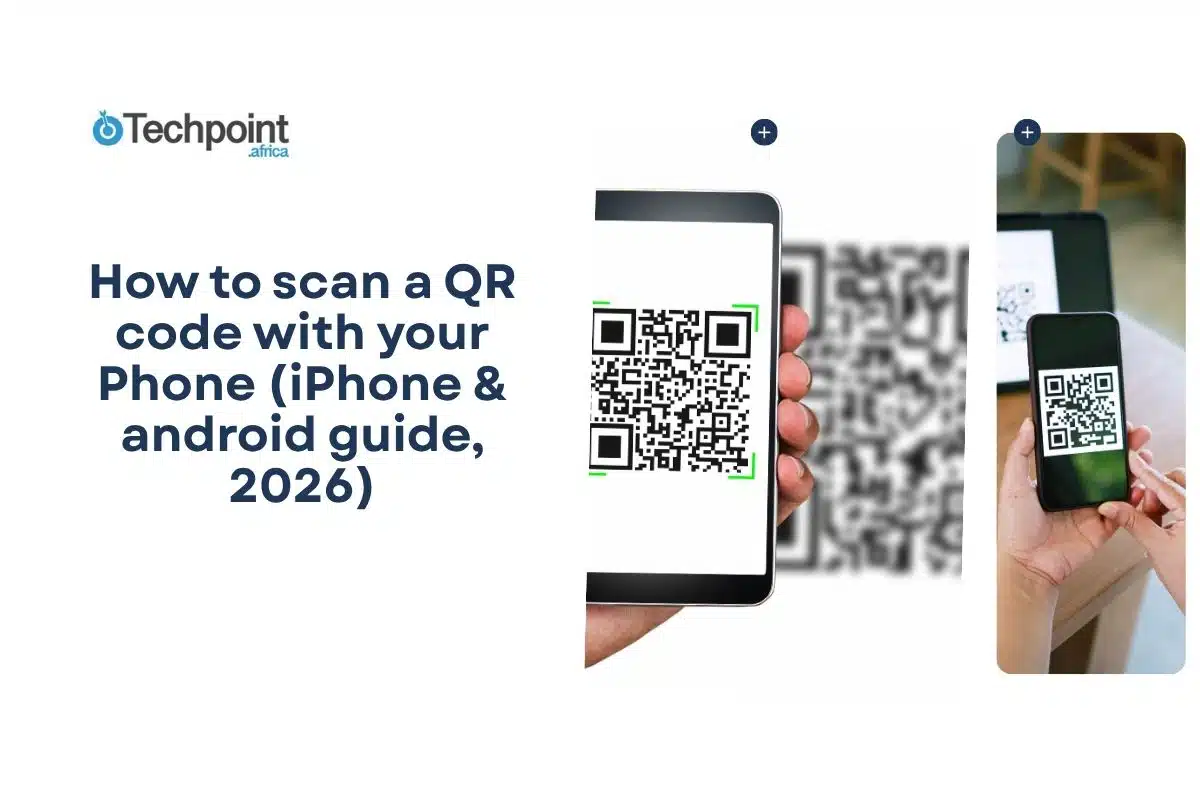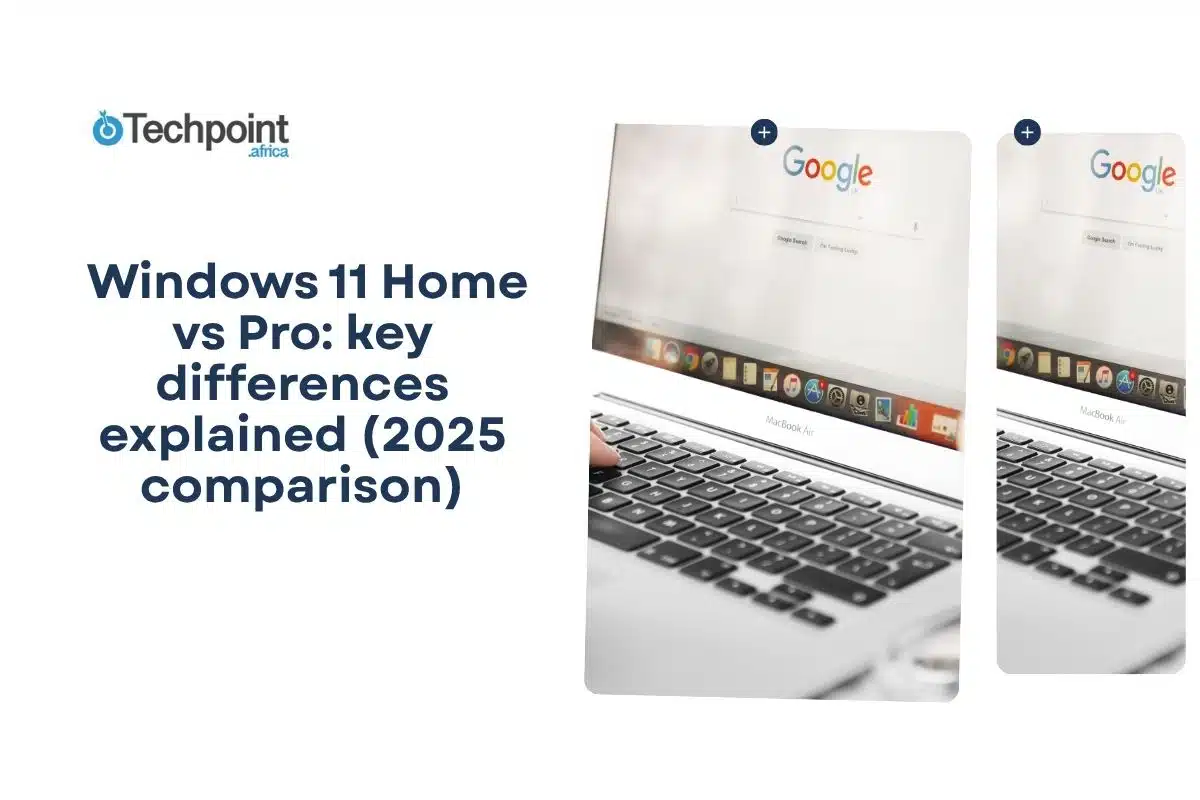
Apple’s 2025 smartwatch lineup introduces three distinct options: the Apple Watch Series 11, the more affordable Apple Watch SE 3, and the rugged flagship Apple Watch Ultra 3. Each is designed for a different type of user, but they also share several commonalities. We’ll focus on them all.
In this comparison, you’ll learn:
- How the Apple Watch Series 11, SE 3, and Ultra 3 differ in size, design, and other features
- What each watch offers
- Which model delivers the best balance of value, performance, and longevity
Specifications overview
| Feature | Apple Watch Series 11 | Apple Watch SE 3 | Apple Watch Ultra 3 |
| Starting Price | $399 (Aluminum) / $699 (Titanium) | $249 | $799 |
| Case Size | 42mm / 46mm | 40mm / 44mm | 49mm |
| Case Material | Aluminum / Titanium | Aluminum | Titanium |
| Display | Always-On Retina LTPO3 OLED, 2,000 nits | Always-On Retina OLED, 1,000 nits | Always-On Retina LTPO3 OLED, 3,000 nits |
| Processor | S10 chip | S10 chip | S10 chip |
| Connectivity | GPS / GPS + Cellular, 5G capable | GPS / GPS + Cellular, 5G capable | Cellular + Satellite, Precision dual-frequency GPS |
| Health Sensors | ECG, Blood Oxygen, HR, Sleep, Temp, Cycle Tracking | HR, Irregular Rhythm, Sleep, Temperature | ECG, Blood Oxygen, HR, Sleep, Temp, Cycle Tracking, Siren, Hypertension alerts |
| Water Resistance | 50m (swim, snorkel, depth gauge 6m) | 50m (swim) | 100m (swim, snorkel, scuba 40m, high-speed water sports) |
| Battery Life | 24 hours (38 hours Low Power) | 18 hours (32 hours Low Power) | 42 hours (72 hours Low Power) |
| Charging | 0–80% in ~30 min | 0–80% in ~45 min | 0–80% in ~45 min |
| Special Features | Crash/Fall Detection, Emergency SOS, Precision Finding | Crash/Fall Detection, Emergency SOS | Crash/Fall Detection, Emergency SOS via Satellite, Precision Finding, Siren |
Price and Value
Let’s talk about money first. After all, you need it to get one of these. The Apple Watch SE 3 starts at $249, making it the most budget-friendly option. That price point makes it appealing for first-time buyers or those upgrading from an older Apple Watch without wanting to spend too much. However, while the SE 3 saves money, it also leaves out some of Apple’s headline health sensors like ECG and Blood Oxygen monitoring.
The Apple Watch Series 11 starts at $399 for the aluminum model with GPS and rises to $699 for the titanium option with GPS and cellular capabilities.
At the top, the Apple Watch Ultra 3 begins at $799. While this investment is steep, it packs rugged titanium, satellite connectivity, extreme water resistance, and unmatched battery life.
The SE 3 is the most affordable choice. The Series 11 makes the most sense for balanced performance and features. The Ultra 3 justifies its price for those who require its durability and advanced features.
Size and Design
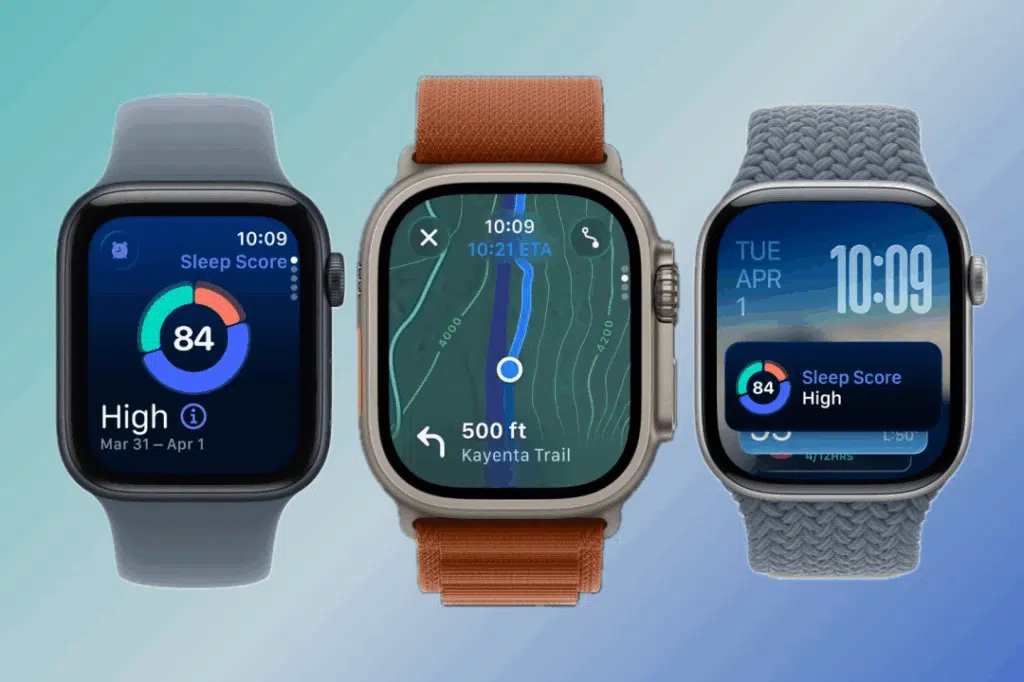
SE 3 is the most compact of the 40 and 44-mm aluminum cases. Its lightweight build makes it highly comfortable, especially for smaller wrists. It still looks modern, though the bezels are slightly thicker than those of Series 11 and Ultra 3.
The Series 11 goes higher with 42mm and 46mm case sizes in aluminum or titanium. The titanium option is beautiful and durable while being lightweight. Its slimmer bezels give more screen space, noticeable when reading notifications or navigating apps. If you’re one for style and aesthetics, this will get you.
The Ultra 3 is unapologetically bold at 49mm. Made only in titanium, it feels substantial on the wrist. It’s designed for visibility in extreme environments, with large buttons, a pronounced Digital Crown, and a raised case edge for screen protection. The size won’t suit everyone (particularly those with smaller wrists) but for users who want durability and a sport-oriented statement piece.
Display
The Apple Watch SE 3 introduces an always-on display in the SE line. It features an LTPO OLED panel with a maximum brightness of up to 1,000 nits. While perfectly fine indoors, it can feel dim in bright sunlight, and its bezels result in a less usable screen area than those of the others. Still, adding always-on functionality is a welcome addition for Apple’s entry-level watch.
The Series 11 significantly upgrades this experience. Its LTPO3 OLED reaches up to 2,000 nits, meaning notifications, workouts, and complications remain visible even on sunny days. The larger case sizes also provide more screen real estate: 989mm² on the 42mm and 1,220mm² on the 46mm. This makes the Series 11 excellent for glances, maps, or responding to messages.
The Ultra 3 features Apple’s brightest and most prominent display. It delivers unmatched visibility at 1,245mm² and up to 3,000 nits, even underwater or in desert-like conditions. The text and icons appear enormous and clear. The wide-angle LTPO3 OLED further improves viewing angles, ensuring clarity regardless of wrist position.
Processor and Performance
All three watches run on Apple’s S10 chip, which means day-to-day speed is comparable across the lineup. Navigation feels smooth, apps launch quickly, and animations are fluid whether you’re on the SE 3, Series 11, or Ultra 3.
What separates them is how this chip is leveraged. The Series 11 and Ultra 3 pair the S10 with Apple’s latest LTPO3 display technology for improved power efficiency, helping to extend battery life. They also use the chip to enable on-device Siri to access health data directly without a cloud connection, making voice commands faster and more private.
While running the identical S10, the SE 3 doesn’t support every advanced health sensor, so some of the chip’s potential isn’t fully realized. It still feels modern, but the long-term benefits of the Series 11 and Ultra 3 are more substantial, as they unlock additional features that Apple is likely to expand upon.
Connectivity
The SE 3 supports GPS and optional GPS + Cellular models, with 5G readiness for faster networks. It covers all the basics (calls, texts, streaming, and navigation) but lacks more advanced options like satellite SOS.
The Series 11 mirrors these options, with GPS or GPS + Cellular models available. With cellular enabled, you can leave your iPhone behind and stay connected. Precision Finding for iPhone is also supported, making locating your paired device in crowded or unfamiliar environments easier.
The Ultra 3 goes further with dual-frequency precision GPS and cellular + satellite connectivity.
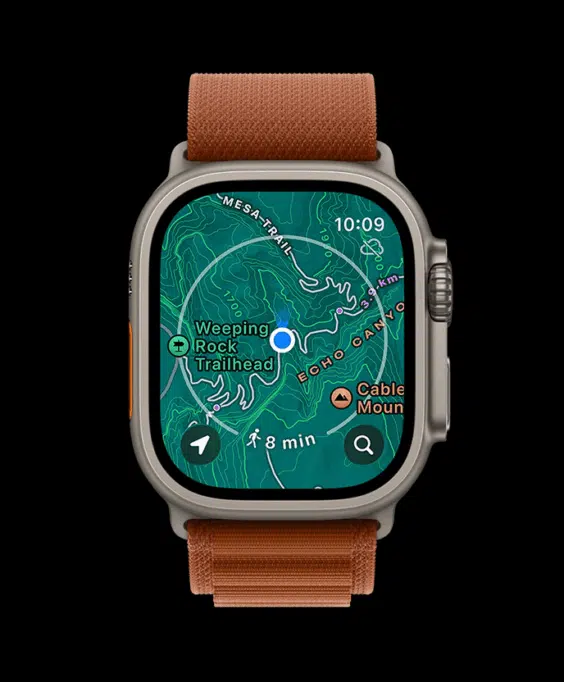
This means you can navigate challenging terrain and send emergency messages via satellite even when regular cellular networks are unavailable. This redundancy can be essential for hikers, climbers, or sailors.
Fitness and Health Tracking
This is where Apple differentiates its watches most clearly.
The SE 3 covers the essentials: heart rate monitoring, high/low heart rate alerts, irregular rhythm notifications, sleep tracking, and temperature sensing. It also includes sleep apnea notifications and cycle tracking. For general wellness, this is great. However, it has no advanced features like ECG and Blood Oxygen monitoring.
The Series 11 adds those extras. ECG is beneficial for users tracking heart health, while the Blood Oxygen app adds another layer of wellness monitoring. Hypertension notifications are also included, giving proactive alerts if blood pressure spikes. Paired with Apple Fitness+, the Series 11 is a comprehensive health companion.
The Ultra 3 builds on this, offering the same health features while expanding fitness use cases. It adds extreme sports monitoring, a depth gauge to 40m, water temperature sensors, and a built-in siren for emergencies.
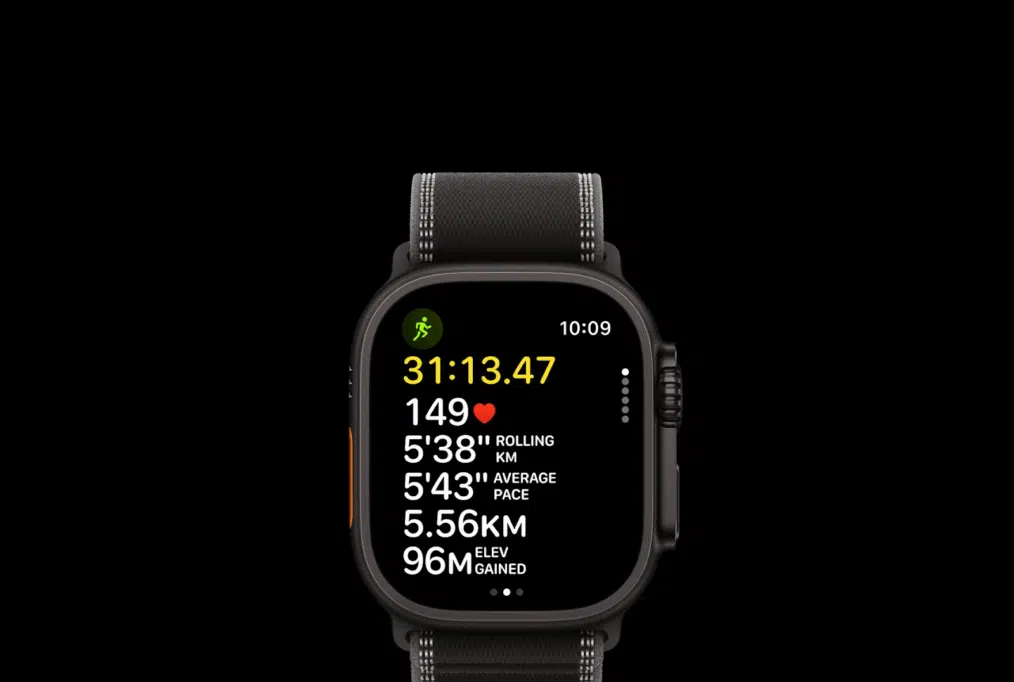
So it’s also about safety in rugged conditions. Athletes and adventurers will find features here that don’t exist in the SE 3 or Series 11.
Durability
The SE 3 is swim-ready and offers 50 m of water resistance. It’s durable enough for workouts and everyday wear, but lacks rugged reinforcement. Its Ion-X glass is more prone to scratches than the sapphire crystal in higher models.
The Series 11 is available in aluminum or titanium. Both models offer 50m water resistance, with the titanium model featuring a sapphire crystal for enhanced scratch resistance. It also supports snorkeling and includes a depth gauge for up to 6m dives. This makes it more versatile for water-based activities than the SE 3.
The Ultra 3 is Apple’s durability piece. It’s built for the most challenging conditions with 100m water resistance, depth support to 40m, and titanium-only construction. It can withstand high-speed water sports, climbing, and rough outdoor use without compromise.

The raised edge around the display protects against impact.
Battery Life
The SE 3 can run for up to 18 hours in standard mode and up to 32 hours in Low Power Mode. It charges from 0 to 80% in about 45 minutes, which is enough for daily use but makes charging every night almost mandatory.
The Series 11 improves on this, lasting up to 24 hours with regular use and 38 hours in Low Power Mode. Thanks to faster charging (0–80% in ~30 minutes), even brief charging sessions quickly boost the battery.
The Ultra 3 leads the way with 42 hours of regular use and up to 72 hours in Low Power Mode. This endurance level is unmatched for travelers, athletes, or anyone away from a charger. While charging is slightly slower (0–80% in ~45 minutes), the longer baseline life means less frequent top-ups.
Final takeaways
- The Apple Watch Series 11 is the most balanced choice, offering advanced health tracking, a better display, and a longer battery life without being as expensive as the Ultra 3.
- Apple Watch SE 3 is best for first-time buyers, budget-conscious users, or anyone needing the essentials.
- Apple Watch Ultra 3 is perfect for athletes, adventurers, or professionals who need rugged durability, extreme brightness, and satellite connectivity.
Wrapping up,
You now know how Series 11, SE3, and Ultra 3 behave and what they offer, so the choice to buy is really simplified.
They’re not competitors but partners with differences essential to different moments. Which appeals to you? What is your pick?
Frequently Asked Questions about Apple Watch Series 11 vs SE 3 vs Ultra 3
1. How do I find my Apple Watch band size?
- Apple provides a printable measuring tool on its website. Alternatively, you can measure your wrist with a soft tape and compare it with Apple’s band size chart.
2. What’s the difference between GPS and GPS + Cellular?
- GPS models require your iPhone to be nearby for calls and texts. GPS + Cellular models can function independently for calls, texts, and streaming when activated with a carrier.
3. Which carriers support Apple Watch cellular service?
- In the U.S., AT&T, T-Mobile, Verizon, and Boost Mobile currently offer cellular plans for the Apple Watch.
4. Which iPhone models are compatible with the new Apple Watches?
- All three new Apple Watches require an iPhone XR or later running the latest iOS version.
5. Is transferring my data to a new Apple Watch easy?
- Yes. During setup, Apple’s Watch app on iPhone can automatically transfer backups, apps, and health data to your new device.
6. How does Apple Trade In work?
- You can trade in an eligible Apple Watch during purchase to receive credit ($30–$335, depending on model and condition).
7. What are my delivery options?
- Apple offers free shipping, or you can pick up your order at an Apple Store. If you place your pre-order early, it typically arrives on release day.
8. Can I return my Apple Watch?
- Yes. Apple’s return window is generally 14 days from the date of delivery.
9. Does AppleCare+ cover these models?
- Yes. AppleCare+ extends coverage and includes accidental damage protection, subject to a service fee.
10. Are Apple Watches eligible for FSA or HSA reimbursement?
- In the U.S., some insurance or benefit programs may reimburse medically necessary devices like the Apple Watch, particularly for models with ECG and health-monitoring features. Please check with your benefits administrator, as eligibility may vary.




